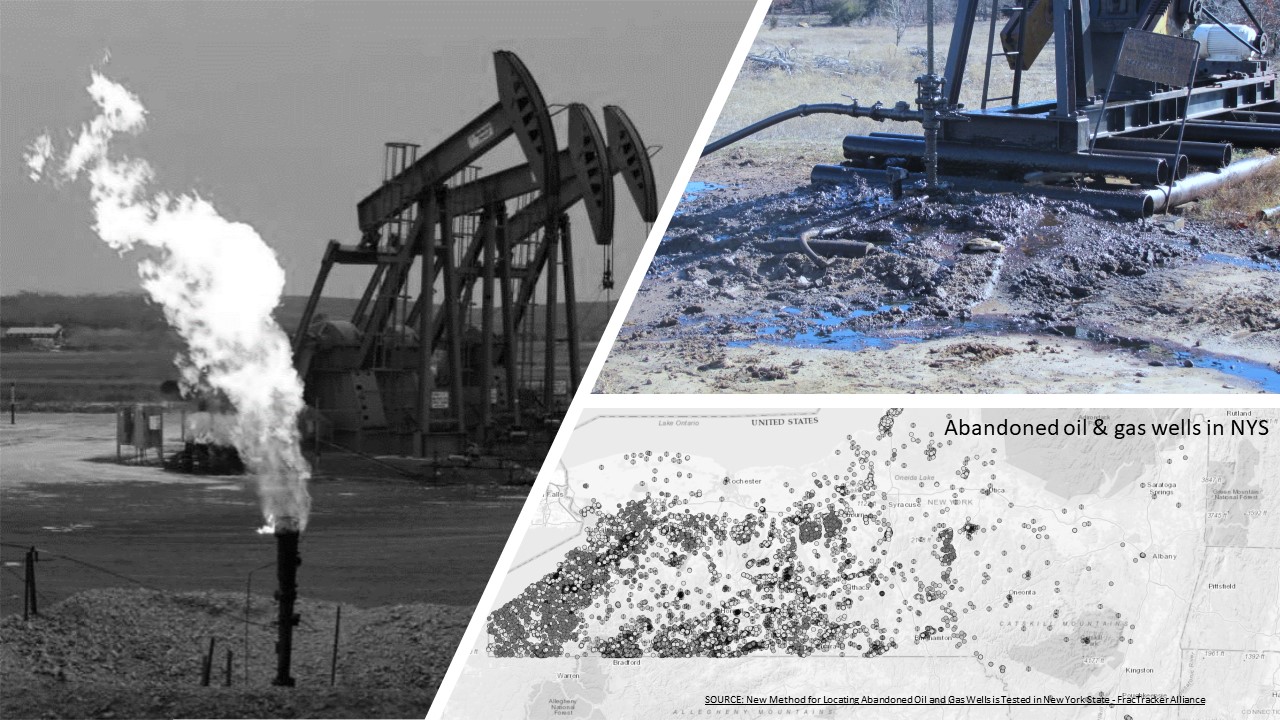Hopefully, for the sake of a livable planet, the days of wildcatting are nearly over. Prospectors drilling for oil and gas in regions not generally known to contain these materials came to be called wildcatters in the late 1800s. Prior to that a wildcat referred more generally to a risky venture. In retrospect wildcatters were gambling far more than their personal fortunes when they drilled hither and yon. Although to be fair, they could not have known that unearthing long dead plants to be burned as fuel could lead to catastrophic climate change.
What if there was a means of redemption for historical and current wildcatters? Perhaps those thousands or millions of wells, long since abandoned yet still able to wreak havoc below and above ground, could be converted into an ally in our urgent quest to rebalance atmospheric carbon. Perhaps wildcatters could become carbon cappers. Indulge me for a moment while I paint a picture perhaps with rose-colored glasses, and then feel free to join the conversation to figure out if this is even remotely possible, and if it is what is the potential for carbon sequestration, and how do we scale it in a time frame that makes a material difference.
Grist wrote an intriguing article earlier this month cheekily entitled Abandonment Issues. The gist of it is that carbon offset credits are beginning to be used to help finance the capping of old wells that are leaking methane, hydrogen sulfide and other toxins. Since many oil companies have declared bankruptcy to avoid covering clean-up costs, the bill is often left to taxpayers. Nowadays with Federal, State and Local government coffers severely depleted due to Covid, funding for this type of activity is challenging at best, even though it promises to provide needed jobs to unemployed oil & gas workers.
Non-producing wells seem to be categorized as abandoned, orphaned or idle. An estimated 3+ million of these wells in the US emitted 281 kilotons of CH4, a GHG far more potent than CO2. Currently a mere 50,000 are listed on State lists for clean up and even those will take years to properly close due to financial constraints. While a small minority may leak enough methane to cover the cost of capping the wells, the rest of the funds are currently being raised through donations or taxpayer dollars.
Typical materials used to cap wells include sand, gravel, native clay, sodium bentonite and cement (note: cement comes with a high carbon footprint which should be factored into the overall life cycle assessment for carbon offsets and removals). Now imagine if instead of sand or clay or cement, biochar could be used to displace some portion of these imported materials.
Apparently some of these wells, at least in my part of the world, are thousands of feet deep so could potentially sequester vast amounts of solid carbon in the form of biochar. While the volumes for filling smaller holes might not be large enough to raise sufficient carbon removal funds to cover the entire cost of capping, biochar could also be used to remediate nearby contaminated soil and water. It might also be better at sorbing hydrogen sulfine, benzene or other toxins than sand or clay.
One thing to note is that while revenues related to carbon offsets are still languishing at an average of $10/t of CO2e, carbon removal credits are currently garnering far higher prices. Though biochar has only recently debuted on 2 carbon removal marketplaces (Puro.earth and carbonfuture.earth), it is poised to become part of much larger marketplaces as VERRA, the world’s largest standards registry, just announced it is developing a biochar GHG methodology to be finalized by the end of 2021. Prices per ton of CO2e for biochar have ranged from $75 – 145 so far. Converting that back into dry tons of biochar generates $200 – $350 meaning the price of biochar could become cost competitive with other fill material if it is locally produced from waste material. To state that differently, for every ton of biochar used, between 2.5 – 3.0 tons of CO2e credits can be sold. (The multiplier depends on various things including emissions related to feedstock acquisition & transportation, processing emissions, carbon content within the biochar, etc.)
With insufficient experience in calculating the volume of materials needed for different sized wells as well as average land area needed to remediate, it is hard to calculate how much carbon removal revenues could be generated. But any additional revenues would no doubt be welcomed to plug these toxic legacy wells. I invite those that know far more than I do on this topic to discuss and hopefully demonstrate feasibility.

